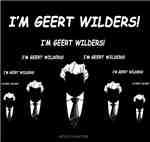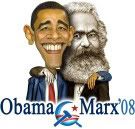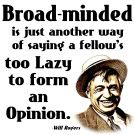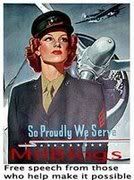The Totalitarian Pseudo-Religions (III)
Continued from Part II:
A much better job was made of it on the right hand side of the totalitarian divide. It is imprecise custom to describe all varieties, Germanic Nazism and its Italian and Spanish counterparts, as Fascism. There are however important and specific differences.
The Spanish branch endeavoured to put itself on a par with the Catholic Church and fitted itself out with a sacred mission, which gave it much more push than the pseudo-religion Soviet style. In Italy - although the former journalist Benito Mussolini proved his megalomaniac tendencies by introducing his own calender, marking the Fascist March on Rome in 1922 - the Italian variety originally didn't do race and pseudo-religion. Mussolini even criticized Hitler's racism. It was not until in1938 the Italo-German Pact of Steel came into effect that the Italian race laws were passed.
In Italy - although the former journalist Benito Mussolini proved his megalomaniac tendencies by introducing his own calender, marking the Fascist March on Rome in 1922 - the Italian variety originally didn't do race and pseudo-religion. Mussolini even criticized Hitler's racism. It was not until in1938 the Italo-German Pact of Steel came into effect that the Italian race laws were passed.
By contrast German Nazism did race, cultural political correctness and religion, and how! The pagan variety. Getting back to our hapless commentator of part I "since the original Nazis were self declared Christians, perhaps we should refer to them as Christos-Nazis": the Nazis weren't self-confessed Christians, it was the other way around: the Nazis mimicked religion, but not the Christian one, which - as we have seen - "bound man's ferocious side that prevented him from usurping God's throne". That - on the contrary - would be the last thing the Nazis stood for as far as the supremacy of Aryan man - the Overman - the Ubermensch was concerned.
The essence of Nazism lies in the extent to which it played the religious card in manipulating the German people. Unlike its mirror ideology communism, it succeeded in touching heart and soul at once. This gave it dynamic, the energy from hell and the cruelty that far exceeded the Italian and Spanish totalitarian varieties.
The writers of The Messianic Legacy speak of "the first mystic theocracy since ancient Rome ... the Fuhrer - not a politician or even a demagogue, but a shaman". It provided the German people with a tribal cosmology, a philosophy and an ideology at once. By the nightly Nuremberg mass displays of uniforms, flags, lights, symbols and hypnotising rhythms that caused a form of trance, manipulating heart, soul and nerve centre (the so-called Cathedrals of Light: see photo). Hitler's rhetorical gifts were non-existent as far as content was concerned: it was simplistic and infantile, renowned for its banality, but it had mantra quality. His intonation had a poisoned energy, like "a jungle war drum". Once combined with the contagiousness of the mass hysterics and the tension of the thousands of people closely packed in an enclosure, the result may well be called altered consciousness, practically: a mystical experience.
Hitler's rhetorical gifts were non-existent as far as content was concerned: it was simplistic and infantile, renowned for its banality, but it had mantra quality. His intonation had a poisoned energy, like "a jungle war drum". Once combined with the contagiousness of the mass hysterics and the tension of the thousands of people closely packed in an enclosure, the result may well be called altered consciousness, practically: a mystical experience.
Hermann Rauschning, an early and intimate aide of Hitler's got cold feet in 1935 and fled to America where he wrote two books in warning the world for the impending menace. It soon became apparent that Hitler knew exactly what he was doing. He's quoted as saying: "During the mass event thought is suspended. As this is the consciousness I need as a sounding board for my speeches, I order people to attend ... intellectuals, the bourgeoisie and the workers. I mix people. I talk to them as a mass", a collective soul of Overmen. This collective soul - the 'Volk', or Germanic tribal spirit, was said to lose power and energy through the presence on its soil of the Undermen. That prevented their greatness from rising to sheer cosmic levels, their rightful destiny as a people. In 'Mein Kampf' Hitler writes in detail how to play the will of people: "we need a hierachical Order of a secular priesthood."
This collective soul - the 'Volk', or Germanic tribal spirit, was said to lose power and energy through the presence on its soil of the Undermen. That prevented their greatness from rising to sheer cosmic levels, their rightful destiny as a people. In 'Mein Kampf' Hitler writes in detail how to play the will of people: "we need a hierachical Order of a secular priesthood."
Parts of the secular religion were provided by the composer Richard Wagner, who in the nineteenth century had "glorified the uniquely sacred quality of the Germanic blood, believing with all his heart in the theatre as a temple of the Germanic art, where mystical rites would set the German soul free". Tom Reiss in The Orientalist describes how in a fact of extreme irony Theodor Herzl got the idea of a modern Jewish state (Zion, Israel) while listening to Wagner's opera Tannhaeuser. A story that is witness to the fact that the romantic, mystical way of thinking, linking race and culture (Blut, blood) to the ancestral soil (Boden) was not exclusively a German one, but was also typical of the time [1].
Tom Reiss in The Orientalist describes how in a fact of extreme irony Theodor Herzl got the idea of a modern Jewish state (Zion, Israel) while listening to Wagner's opera Tannhaeuser. A story that is witness to the fact that the romantic, mystical way of thinking, linking race and culture (Blut, blood) to the ancestral soil (Boden) was not exclusively a German one, but was also typical of the time [1].
The philosopher Friedrich Nietsche we have already mentioned as provider of the required basic mind-set..
Occultism and secret societies were also rife in the Third Reich: new Templars, Germanic Orders, the Thule Society, and the Freicorps (proto SS), the latter inspired by the medieval Teutonic knights and essential to the National Socialist cause. Christian calender occasions were replaced by pagan celebrations: Jule Tide, the semination of the flag (Blutfahne), harvest and fertility rites, solstices, and the Indo-Germanic celebration of the return of the sun god: the Sol Invictus cult (Hitler as Sol Invictus: see photo).
Christian calender occasions were replaced by pagan celebrations: Jule Tide, the semination of the flag (Blutfahne), harvest and fertility rites, solstices, and the Indo-Germanic celebration of the return of the sun god: the Sol Invictus cult (Hitler as Sol Invictus: see photo).
The Orientalist provides us with a hilarious anti climax to the carefully constructed pseudo-religious National Socialist building: a prankish claim by one Putzi Hanfstaengl - the ultimate American version of the public school tie. He was a member of the core group responsible for the early Nazi Party political campaign - Hitler's Flying Circus - and head of foreign press relations. Reiss: "Among his many creative contributions to the early Nazi movement was turning the Harvard football song - 'Fight Harvard! Fight! Fight! Fight!' - into the model for the chant 'Sieg Heil! Sieg Heil! Sieg Heil!' of the Nazi mass meetings".
Reality may out-weird fiction many times over.













1 comment:
Enjoyed reading your post.
History is often more twisted than fiction.
Post a Comment